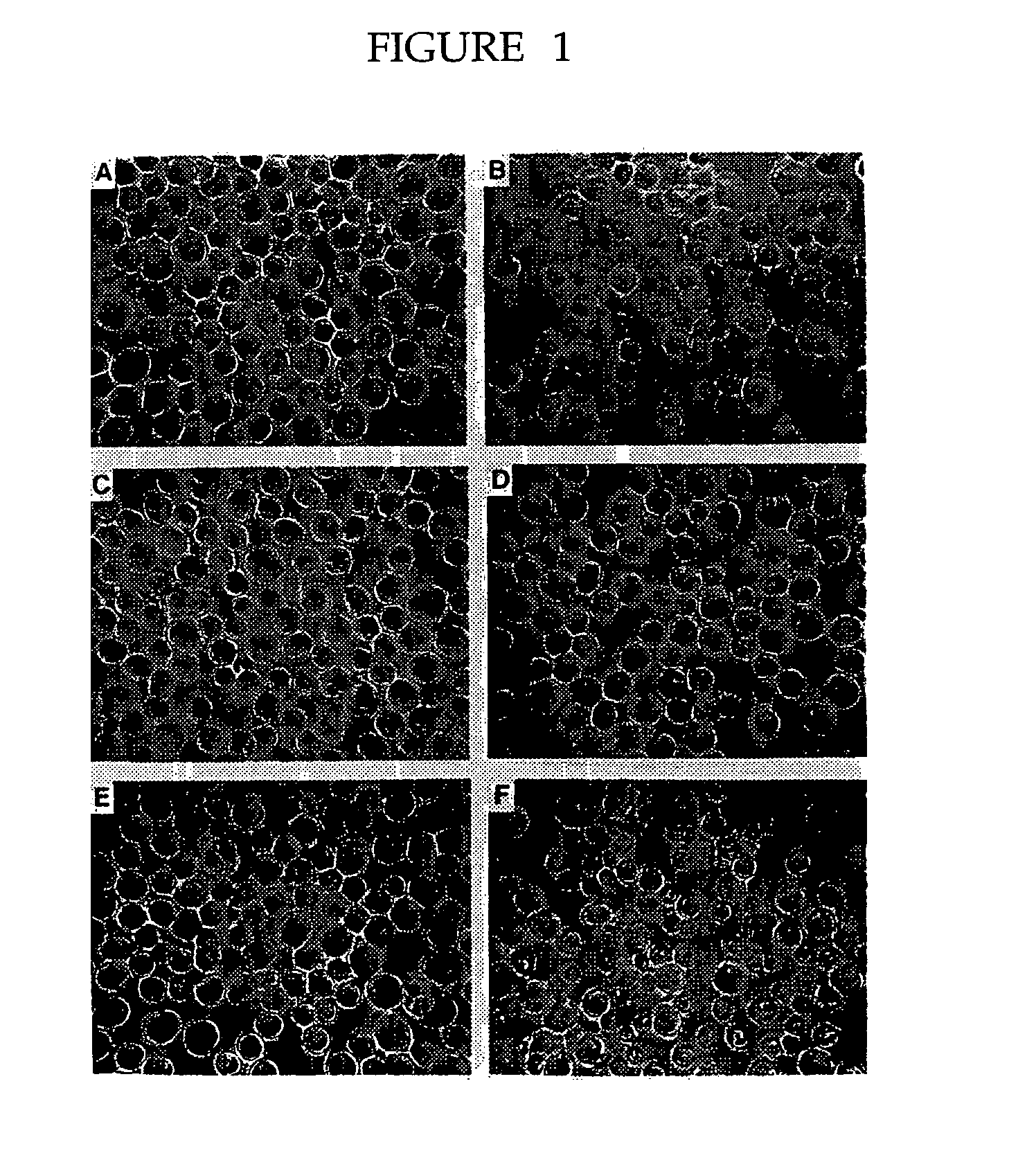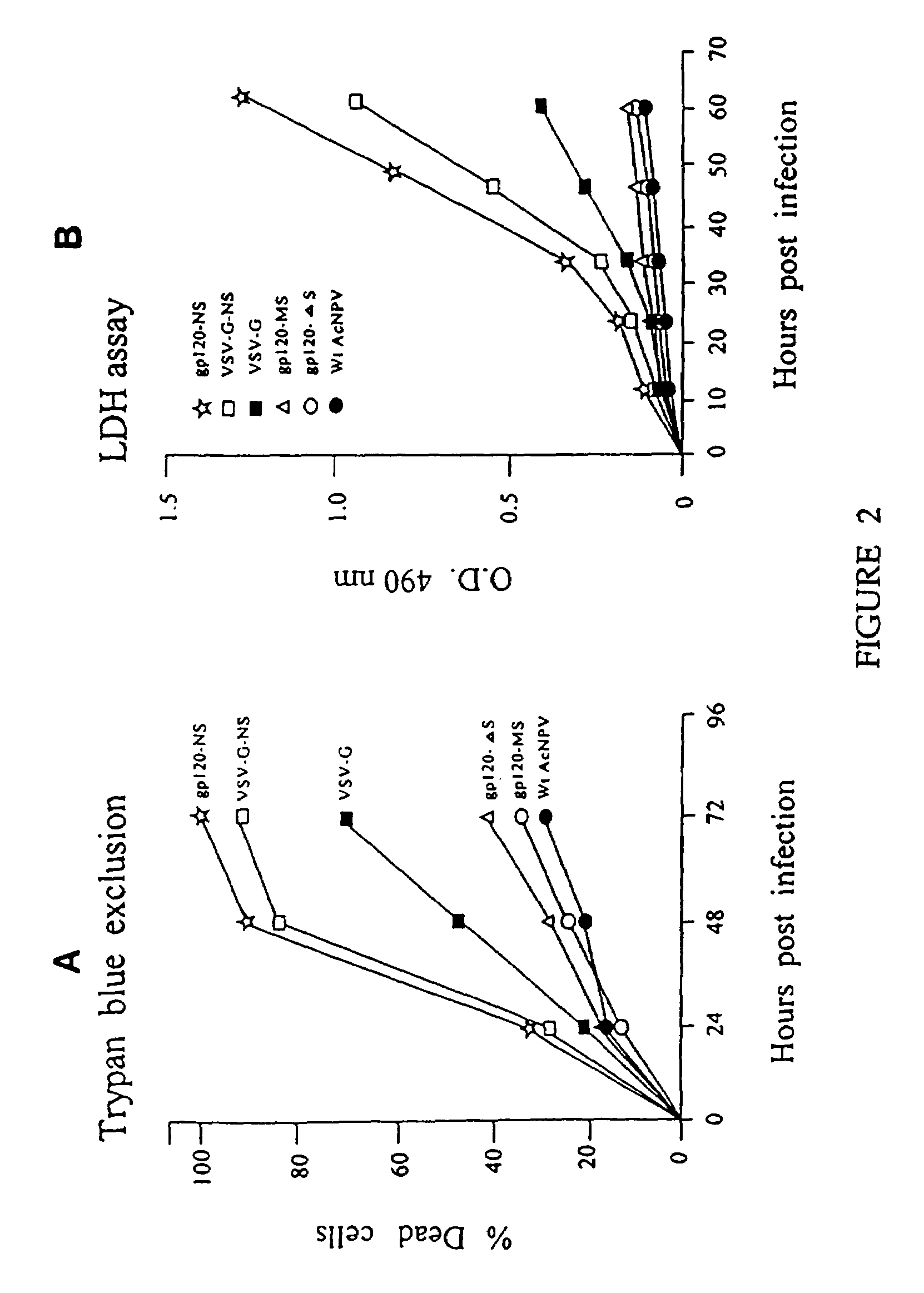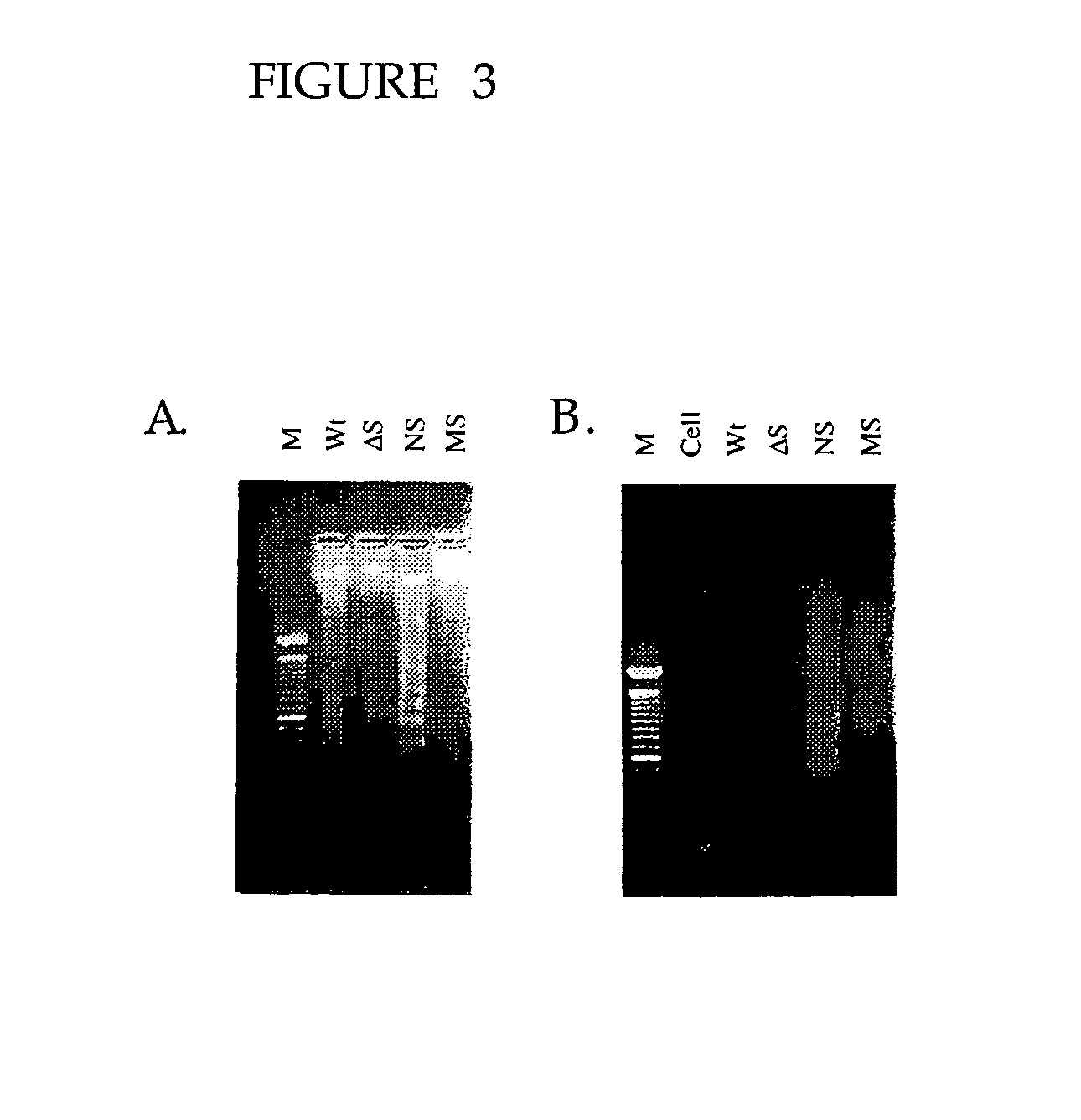HIV vaccine
a technology for hiv infection and vaccine, applied in the field of new vaccines, can solve the problems of limited availability of such drugs, progress has not been rapid, and there is no permanent cure for aids or hiv infection, and achieve the effect of efficient signal sequen
- Summary
- Abstract
- Description
- Claims
- Application Information
AI Technical Summary
Benefits of technology
Problems solved by technology
Method used
Image
Examples
example 1
Construction of Recombinant Baculoviruses
[0071]Construction of recombinant baculoviruses expressing HIV-1 gp120-NSS, gp120-MSS, and gp120-ΔS has been described previously by Li et al. (Virology 204:266–278, 1994).
[0072]Construction of recombinant baculovirus expressing VSVInd glycoprotein (G) was described previously by Bailey et al. (Virology 169:323–331, 1989).
[0073]Construction of recombinant baculovirus expressing VSVInd G protein with HIV-1 env signal sequence (VSV-G-NSS):
[0074]To replace the signal sequence of VSV-G protein, the present inventors first constructed VSV-G-ΔS by PCR with two primers:
[0075]
primer #1:5′-GGC GGATCC GGATCA ACG TTC ACC ATA GTT-3′(SEQ. ID. NO.:1)(5′ primer) BamHI SphI +1VSV-Gprimer #2:complementary to C-terminus gene of VSV-G(3′ primer)5′GGC GGATCC TTA CTT TCC AAG TCG-3′(SEQ. ID. NO.:2) BamHI stop codon
[0076]The plasmid pwK1 (which contains VSVInd full-length G gene, and provided kindly by Dr. Robert R. Wagner, University of Virginia, U....
example 2
Microscopic Examination of Recombinant Baculoviruses Infected Cells
[0083]SF21 cells were infected with recombinant AcNPV at a m.o.i. of 5 PFU / cell and incubated at 27° C. for 48 hrs. The infected cells were examined by phase-contrast microscope. The results are shown in FIG. 1. (A) wild-type AcNPV-infected cells; (B) vAcgp120-NS-infected cells (rgp120 with the HIV-1 natural signal sequence showing cell lysis); (C) vAcgp120-ΔS-infected cells; (rgp120 without the signal sequence showing intact cells); (D) vAc8gp120-MS-infected cells (rgp120 with mellitin signal sequence showing intact cells); (E) vAcVSV-G-infected cells (VSV G protein showing intact cells); (F) vAcVSV-G-NS-infected cells. (VSV G protein with the HIV-1 env natural signal sequence showing cell lysis).
[0084]The above results demonstrate that the HIV-1 env signal sequence kills cells rapidly.
example 3
Effects of the HIV-1 env Signal Sequence on Cell Death
[0085]SF21 cells were infected with recombinant AcNPV at an m.o.i. of 5 PFU / Cell for 1 hr, and the inoculum was removed and incubated with the complete medium TNM-FH containing 10% fetal bovine serum (FBS). At 24, 48, and 72 hrs after infection, cells were stained with trypan blue (GIBCO, BRL) for 5 min. and the cells were counted through the microscope and the percent of dead cells was determined by using the following formulae:
[0086]Deadcells(stained)viablecells(unstained)+Deadcells×100=%DeadCells
Lactate Dehydrogenase Release Assay (LDRA):
[0087]The LDRA was performed according to the instructions of the manufacturer (Boehringer Mannheim Cytotoxicity Detection Kit).
[0088]SF21 cells were infected with recombinant AcNPV at an m.o.i. of 5 PFU / cell for 1 hr. and the inoculum was removed and incubated with complete medium at 27° C., culture medium was collected at regular intervals of 12 hr. and centri...
PUM
| Property | Measurement | Unit |
|---|---|---|
| concentration | aaaaa | aaaaa |
| pH | aaaaa | aaaaa |
| pH | aaaaa | aaaaa |
Abstract
Description
Claims
Application Information
 Login to View More
Login to View More - R&D
- Intellectual Property
- Life Sciences
- Materials
- Tech Scout
- Unparalleled Data Quality
- Higher Quality Content
- 60% Fewer Hallucinations
Browse by: Latest US Patents, China's latest patents, Technical Efficacy Thesaurus, Application Domain, Technology Topic, Popular Technical Reports.
© 2025 PatSnap. All rights reserved.Legal|Privacy policy|Modern Slavery Act Transparency Statement|Sitemap|About US| Contact US: help@patsnap.com



